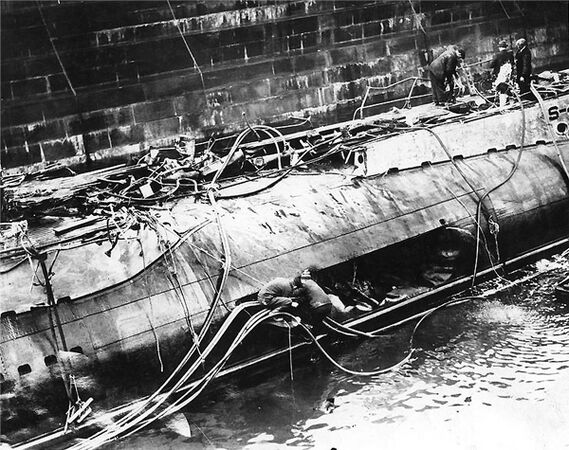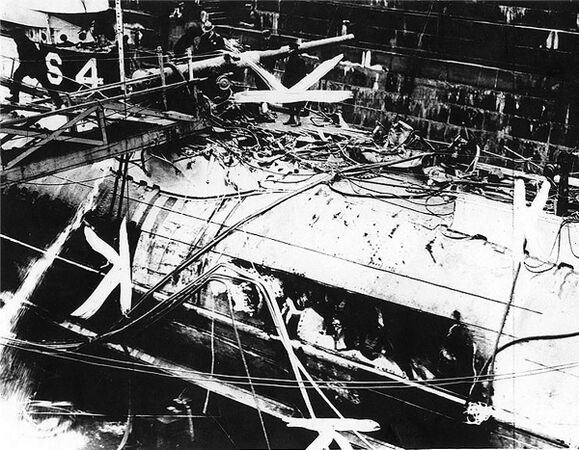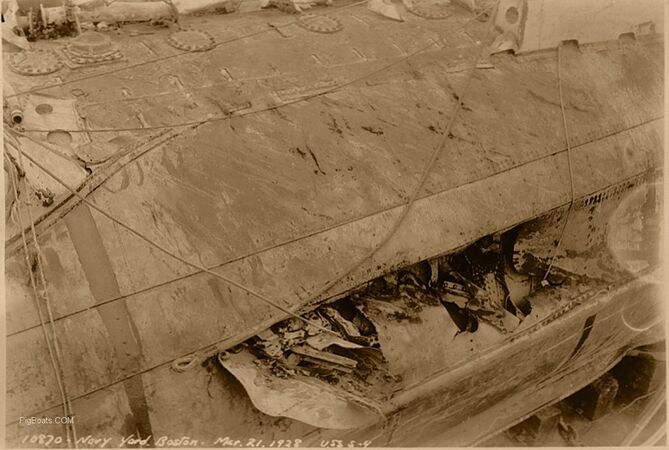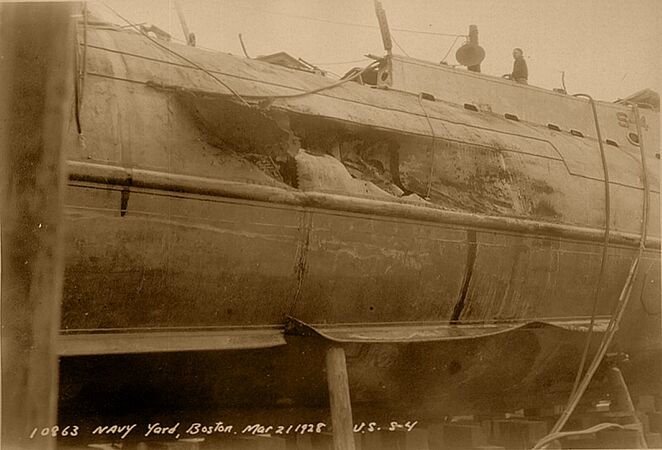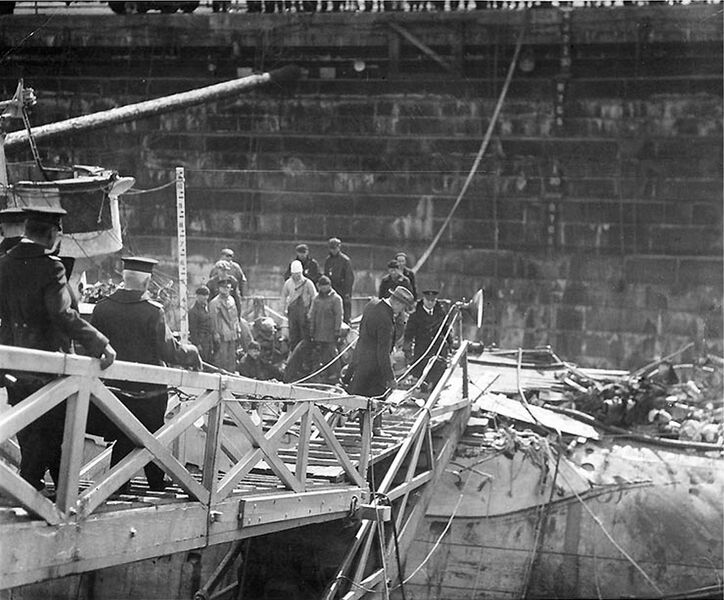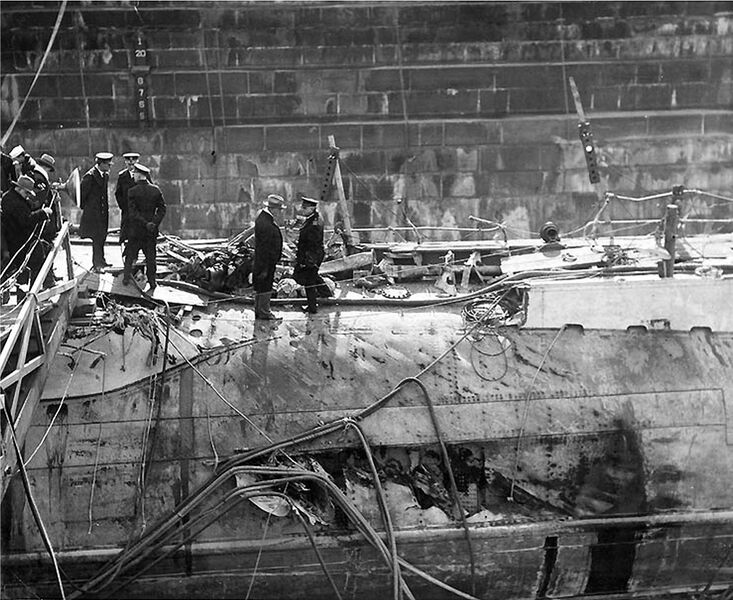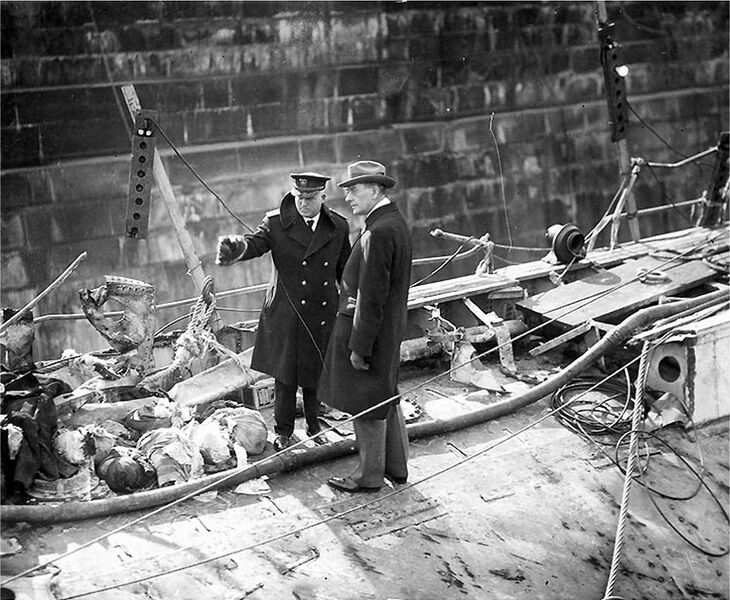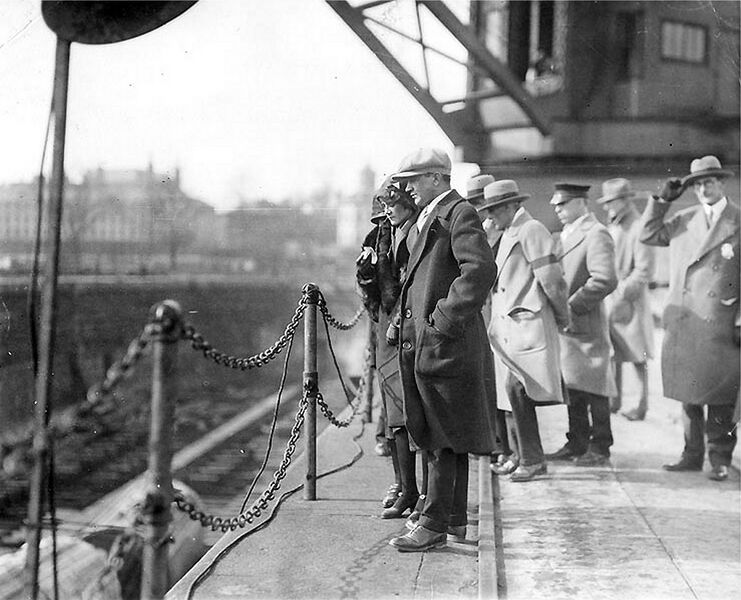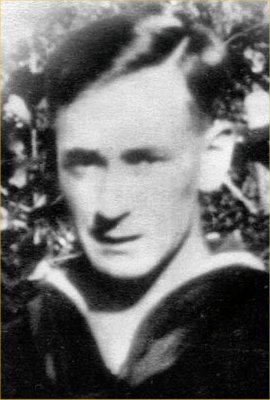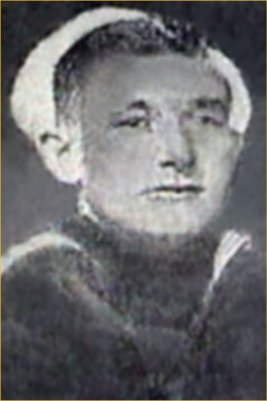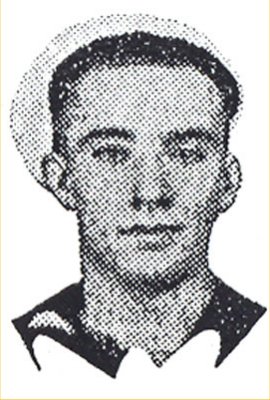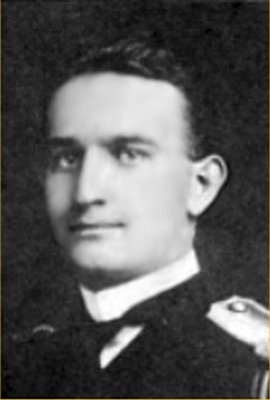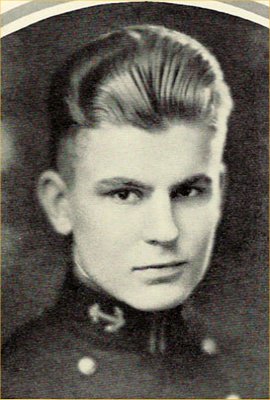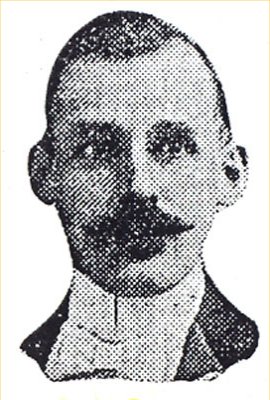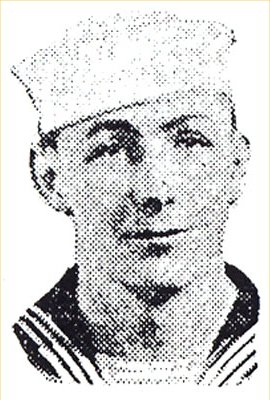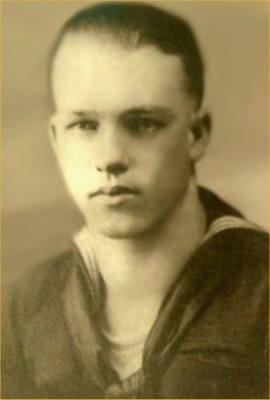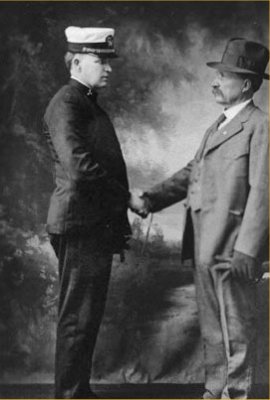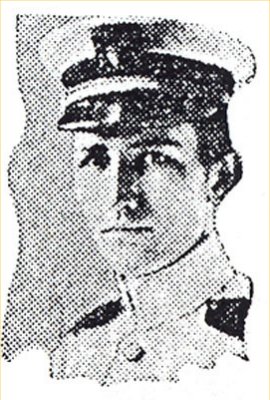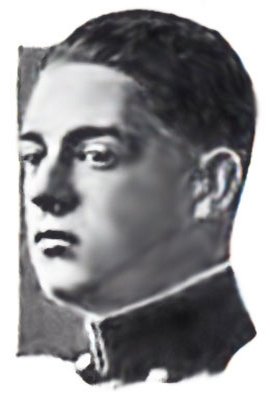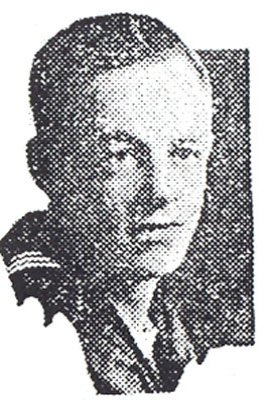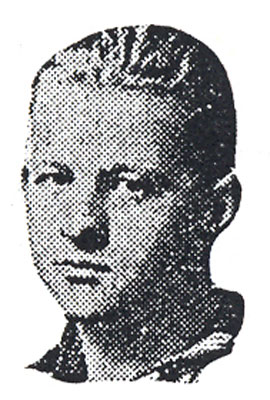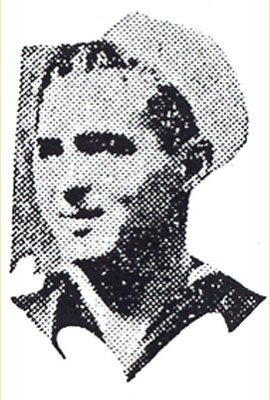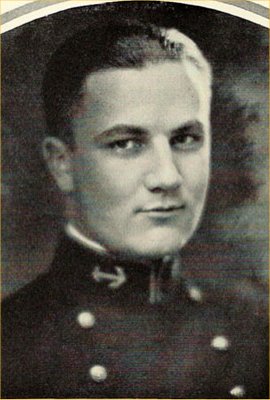S-4 salvage: Difference between revisions
Pbcjohnston (talk | contribs) mNo edit summary |
No edit summary |
||
| Line 158: | Line 158: | ||
[[File:S-4 Bell - Falcon CO Henry Hartly-Diver Chief Thomas Eadie.jpg|left|500px]] | [[File:S-4 Bell - Falcon CO Henry Hartly-Diver Chief Thomas Eadie.jpg|left|500px]] | ||
On the left is LT Henry Hartley, the commanding officer of the USS Falcon (AM-28), the principal salvage ship of the task force that raised the S-4. His expertise was instrumental in the successful salvage of the boat. On the right is Chief Gunner's Mate Thomas Eadie, one of the leading divers during the salvage effort. Eadie is a USN diving legend of unparalleled skill and bravery. He worked on many projects, including the salvage of the S-51 and the S-4. He was awarded two Navy Crosses and the Medal of Honor for his work. | On the left is LT Henry Hartley, (holding his little dog), the commanding officer of the USS Falcon (AM-28), the principal salvage ship of the task force that raised the S-4. His expertise was instrumental in the successful salvage of the boat. On the right is Chief Gunner's Mate Thomas Eadie, one of the leading divers during the salvage effort. Eadie is a USN diving legend of unparalleled skill and bravery. He worked on many projects, including the salvage of the S-51 and the S-4. He was awarded two Navy Crosses and the Medal of Honor for his work. | ||
The two men are proudly displaying the S-4's bell, recovered from the wreck. | The two men are proudly displaying the S-4's bell, recovered from the wreck by Eadie. | ||
<small>Photo in the private collection of Ric Hedman.</small> | <small>Photo in the private collection of Ric Hedman.</small> | ||
| Line 198: | Line 198: | ||
As a result of these first sinkings the doors used in submarines were redesigned smaller and heavier and existing boats were retrofitted with these over time. New submarines were designed with the smaller doors. | As a result of these first sinkings the doors used in submarines were redesigned smaller and heavier and existing boats were retrofitted with these over time. New submarines were designed with the smaller doors. | ||
<small>U.S. Navy photo.</small> | <small>U.S. Navy photo, copy in the collection of Ric Hedman.</small> | ||
[[File:Red bar sub new.jpg]] | [[File:Red bar sub new.jpg]] | ||
Revision as of 00:05, 16 January 2024
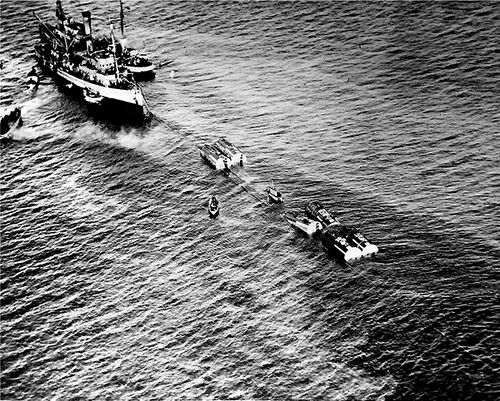
The salvage operation went remarkably well, all things considered. The Navy had learned a lot about open ocean salvage during the S-51 operation two years prior. Those lessons greatly sped the S-4 operation, and she was off the bottom in a little over three months, as opposed to the 9½ months for the S-51.
Please see the Jim Christley article at this link for the story of the S-4.
U.S. Navy photo.
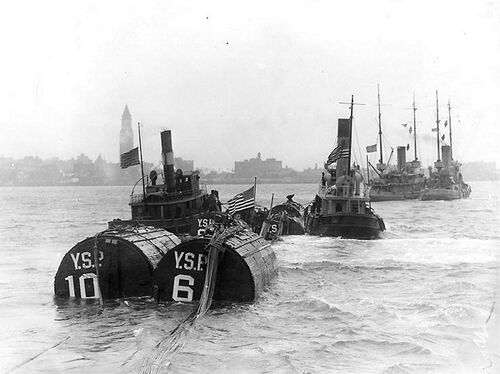
U.S. Navy photo.
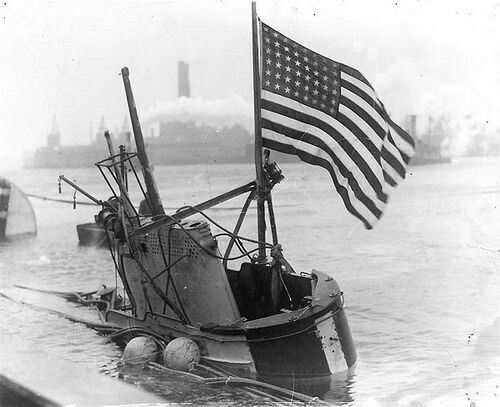
U.S. Navy photo.
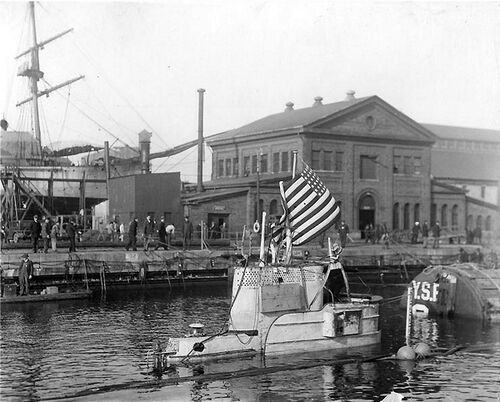
U.S. Navy photo.

U.S. Navy photo.
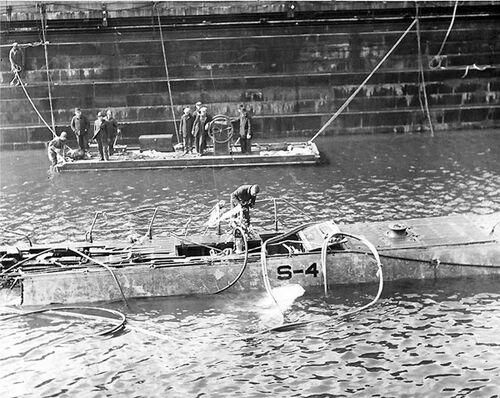
U.S. Navy photo.
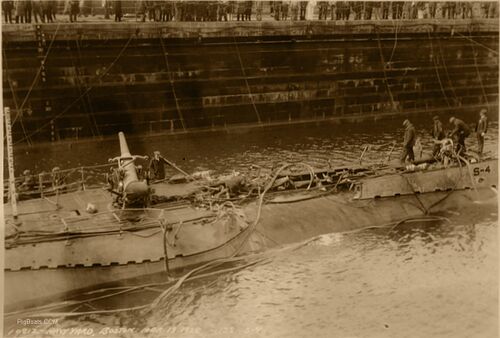
Image provided courtesy of the Stephen B. Luce Library, SUNY Maritime College, Papers of John S. Baylis.
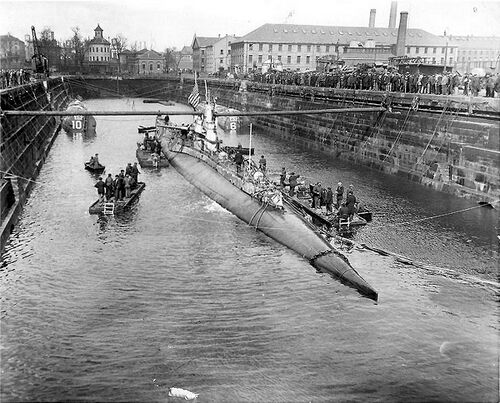
U.S. Navy photo
Image provided courtesy of the Stephen B. Luce Library, SUNY Maritime College, Papers of John S. Baylis via Joe Williams.

mage provided courtesy of the Stephen B. Luce Library, SUNY Maritime College, Papers of John S. Baylis via Joe Williams.
-
U.S. Navy photo.
-
U.S. Navy photo.
-
Image provided courtesy of the Stephen B. Luce Library, SUNY Maritime College, Papers of John S. Baylis via Joe Williams.
-
Image provided courtesy of the Stephen B. Luce Library, SUNY Maritime College, Papers of John S. Baylis via Joe Williams.
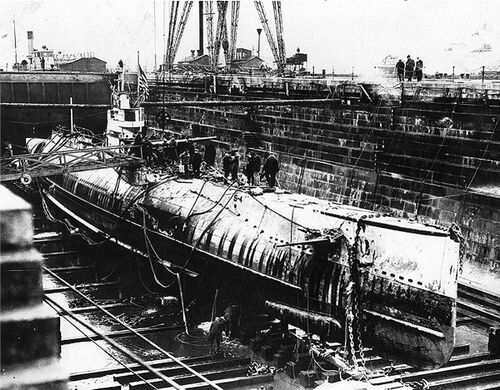
The long sausage looking object on the hull below the waterline beneath the bow planes is a MV sonar, a replacement for the earlier Y-tube mounted on the main deck forward. It was a line array of 12 microphones and was electronically steered. A duplicate array was on the port side.
U.S. Navy photo.
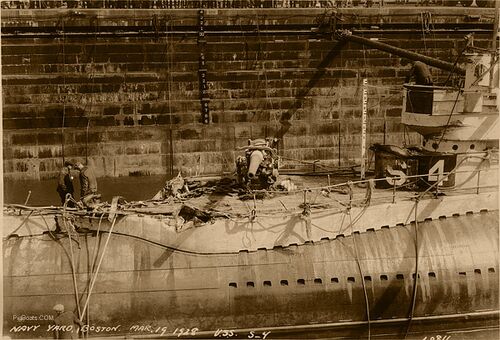
Image provided courtesy of the Stephen B. Luce Library, SUNY Maritime College, Papers of John S. Baylis via Joe Williams.
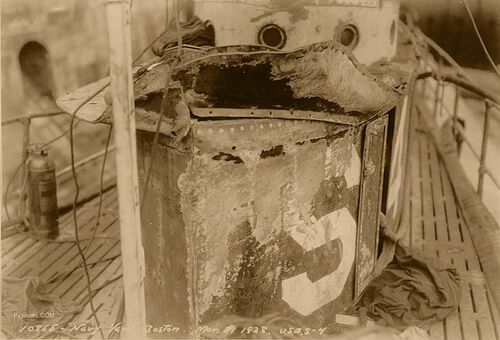
Image provided courtesy of the Stephen B. Luce Library, SUNY Maritime College, Papers of John S. Baylis via Joe Williams.
U.S. Navy photos.
U.S. Navy photos.
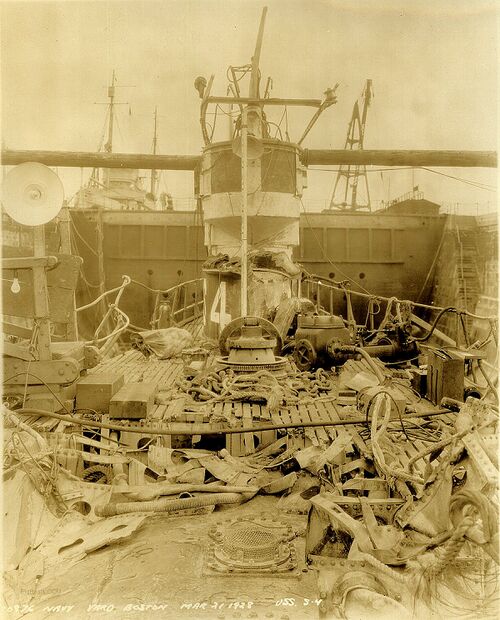
Image provided courtesy of the Stephen B. Luce Library, SUNY Maritime College, Papers of John S. Baylis via Joe Williams.
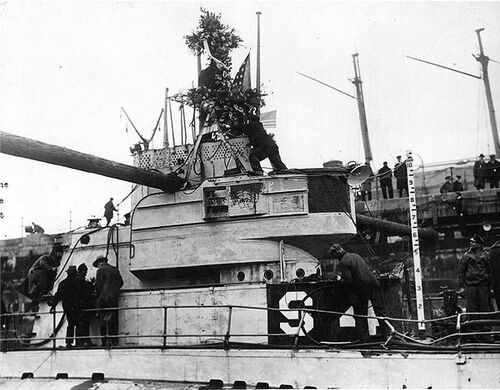
U.S. Navy photo.
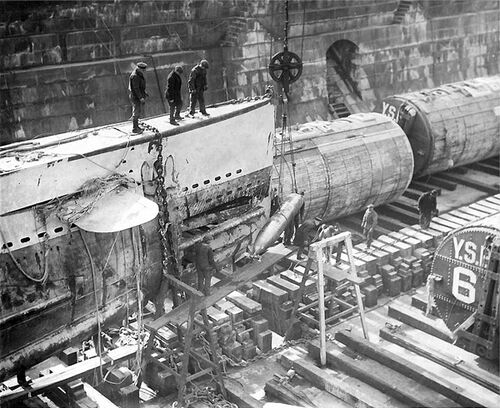
U.S. Navy photo.

On the left is LT Henry Hartley, (holding his little dog), the commanding officer of the USS Falcon (AM-28), the principal salvage ship of the task force that raised the S-4. His expertise was instrumental in the successful salvage of the boat. On the right is Chief Gunner's Mate Thomas Eadie, one of the leading divers during the salvage effort. Eadie is a USN diving legend of unparalleled skill and bravery. He worked on many projects, including the salvage of the S-51 and the S-4. He was awarded two Navy Crosses and the Medal of Honor for his work.
The two men are proudly displaying the S-4's bell, recovered from the wreck by Eadie.
Photo in the private collection of Ric Hedman.

S-4 flooded through a hole, made by Paulding's bow, in the forward starboard side of the Battery Room.
U.S. Navy photo.
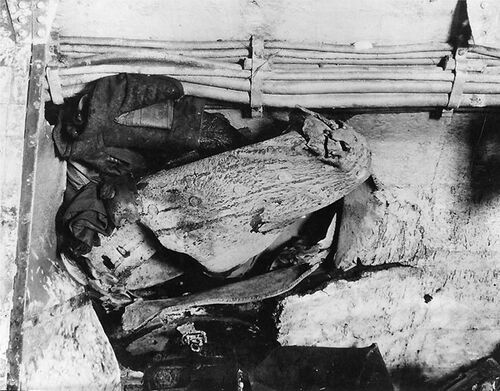
U.S. Navy photo.
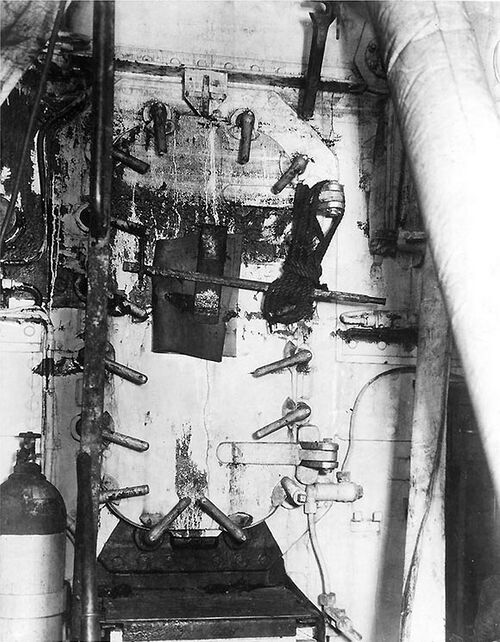
The six men in this compartment were;
Lieutenant Graham N. Fitch
Torpedoman's Mate Russell A. Crabb
Seaman Joseph L. Stevens
Seaman George Pelnar
Torpedoman's Mate Roger L. Short
Torpedoman's Mate Frank Snizek
As the trapped men used the last of available oxygen in the sub's torpedo room, a diver placed his helmeted ear to the side of the vessel and received this Morse-coded message, “Is … there … any … hope?” Unfortunately, the ultimate answer was "no". All six men died.
As a result of these first sinkings the doors used in submarines were redesigned smaller and heavier and existing boats were retrofitted with these over time. New submarines were designed with the smaller doors.
U.S. Navy photo, copy in the collection of Ric Hedman.
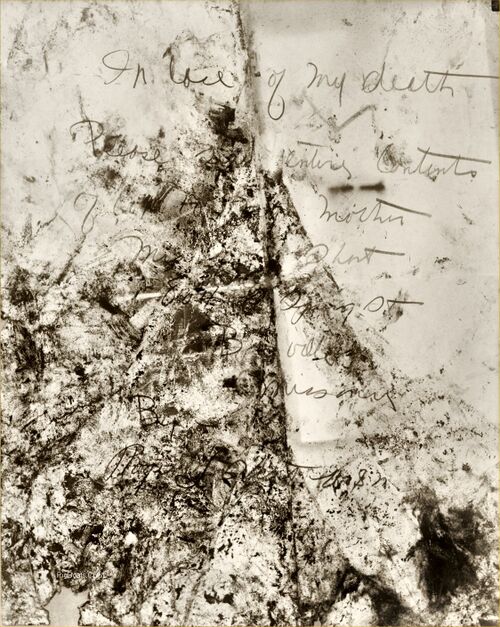
The letter says: In case of my death please send entire contents of box to my mother Mrs. (unreadable) Short 804 (unreadable) Spring St. Booneville, Missouri. By Roger L. Short U.S.N.
Courtesy of the Boston Public Library, Leslie Jones Collection.
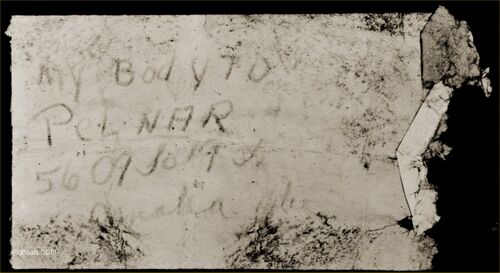
Seaman George Pelnar had only been aboard for 21 days at the time of sinking.
Courtesy of the Boston Public Library, Leslie Jones Collection.
-
Walter Bishop
-
Henry Handy Brown
-
Charles Frederick Burrell
-
Charles Beresford Calcott
-
William Franklin Callaway
-
Graham Newell Fitch
-
Charles A. Ford / Civilian
-
Daniel Michael Gavin
-
Dewey Victor Haney
-
Aaron A. Hodges w/Uncle
-
Roy Kehlor Jones
-
Joseph Alfred McGinley
-
John Jospeh Powers
-
Roger Leslie Short
-
Frank Snizek
-
Joseph William Sternman
-
Joseph Leighton Stevens
-
Donald Weller
Other lost Crew with no photo:
Clarence Ferdinand Bethke / Earl Welsh Boone / Elmer Lyfford Cash / Russell Archibald Crabb / William Dempsey / Robert William Diefenbach / John Joseph Fennell / Donald Fred Goering / Peder Haaland / Buster Harris / Arthur Frederick Hodges / Paul Richard Kempfer / J. H. Long / Fred Henry O'Shields / George Pelnar / Rudolf James Rose / Alfred Eugene Seaton / Carl Bernice Strange / Mariano Tedar / Carl Harold Thompson / Walter Ross Tolson / James Johnson White
Photos courtesy of the On Eternal Patrol website
Page created by:
Ric Hedman & David Johnston
1999 - 2023 - PigBoats.COM©
Mountlake Terrace, WA, Norfolk, VA
webmaster at pigboats dot com

